Kenya 2014 – Day 2: Brooding skies
November 19, 2014. (Previous day)
The reason I included Samburu in our travel route is really threefold. It’s a great place to see the magnificent Oryx antelopes, it’s known for its many elephants, and the previous times I was there it was a bird paradise. One of the big ambitions for this visit was to see if we could find Oryx or one of the characteristic species of Samburu in sunrise light.
Samburu is a National Reserve, and like many Reserves and Parks in Kenya, visitors are not allowed to leave the camps until sunrise and must be back around sunset. I believe the reason for this is to remove the risk of tourists getting in the way of the silent battle that exists between rangers and poachers. Therefore we head out of Larsens camp as soon as we’re allowed, right around 06:00. The skies are unfortunately clouded, and the wonderful golden African sunrise light eludes us except for brief glimpses.
Unfortunately we didn’t find any animals to shoot against the glimpses of sunrise.
While the number of elephants were overwhelming and nothing like anything I had seen on my previous visits, some of the other wildlife was more elusive than before. Finding any Oryx proved to be very difficult, and even Grévys zebras were more scarce. I can only speculate, but I suppose the number of elephants had driven some of the other animals to other parts of the area.
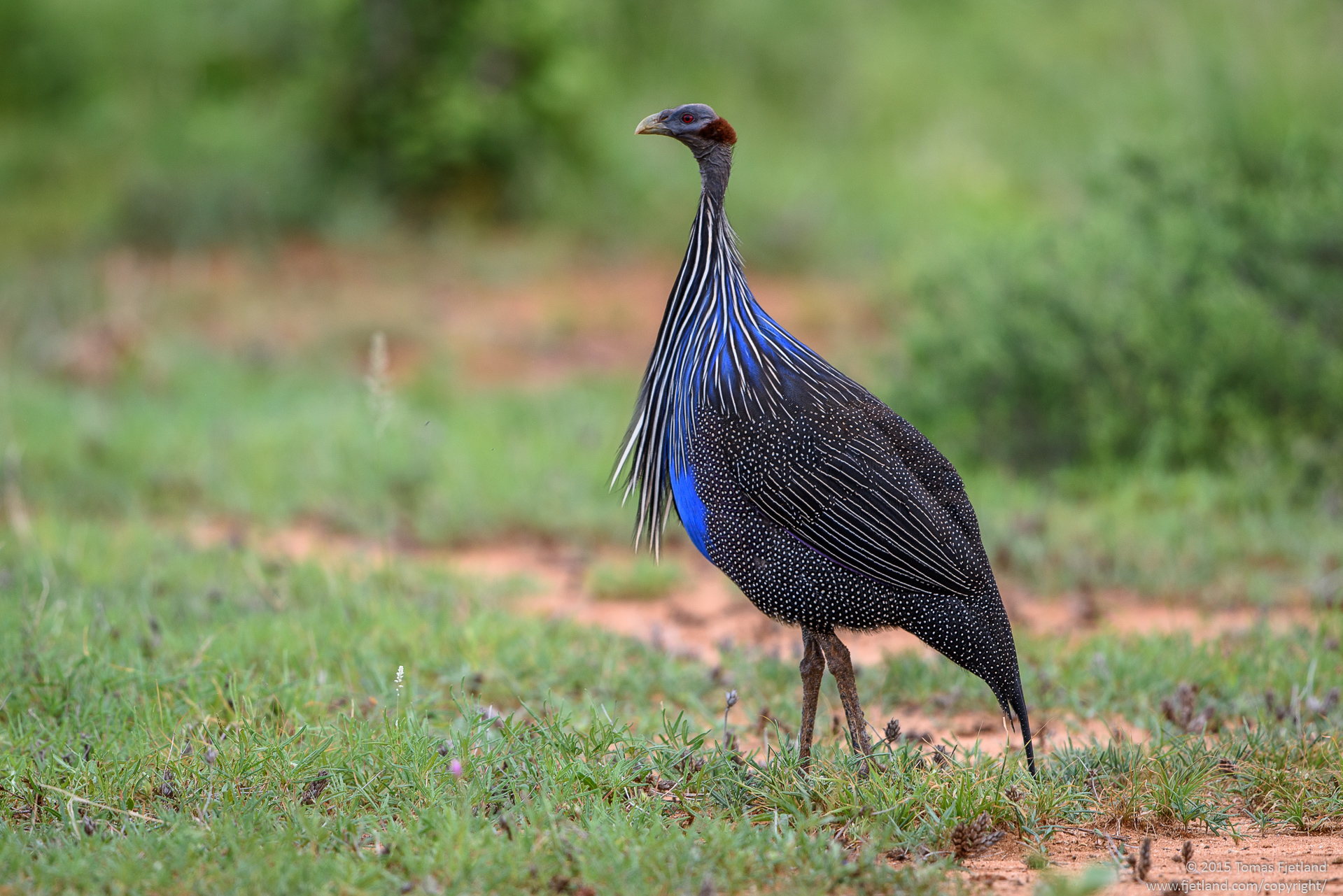
The vulturine guineafowl might not have the fancy helmet of its relative, but it certainly has the most striking plumage
While there were less birdlife in the reserve than on my previous visits, Samburu still has a wide range of birds, including many species not normally seen in the more open areas of the Mara. Thanks to all the weavers, almost every tree is decorated with large numbers of weaver nests.
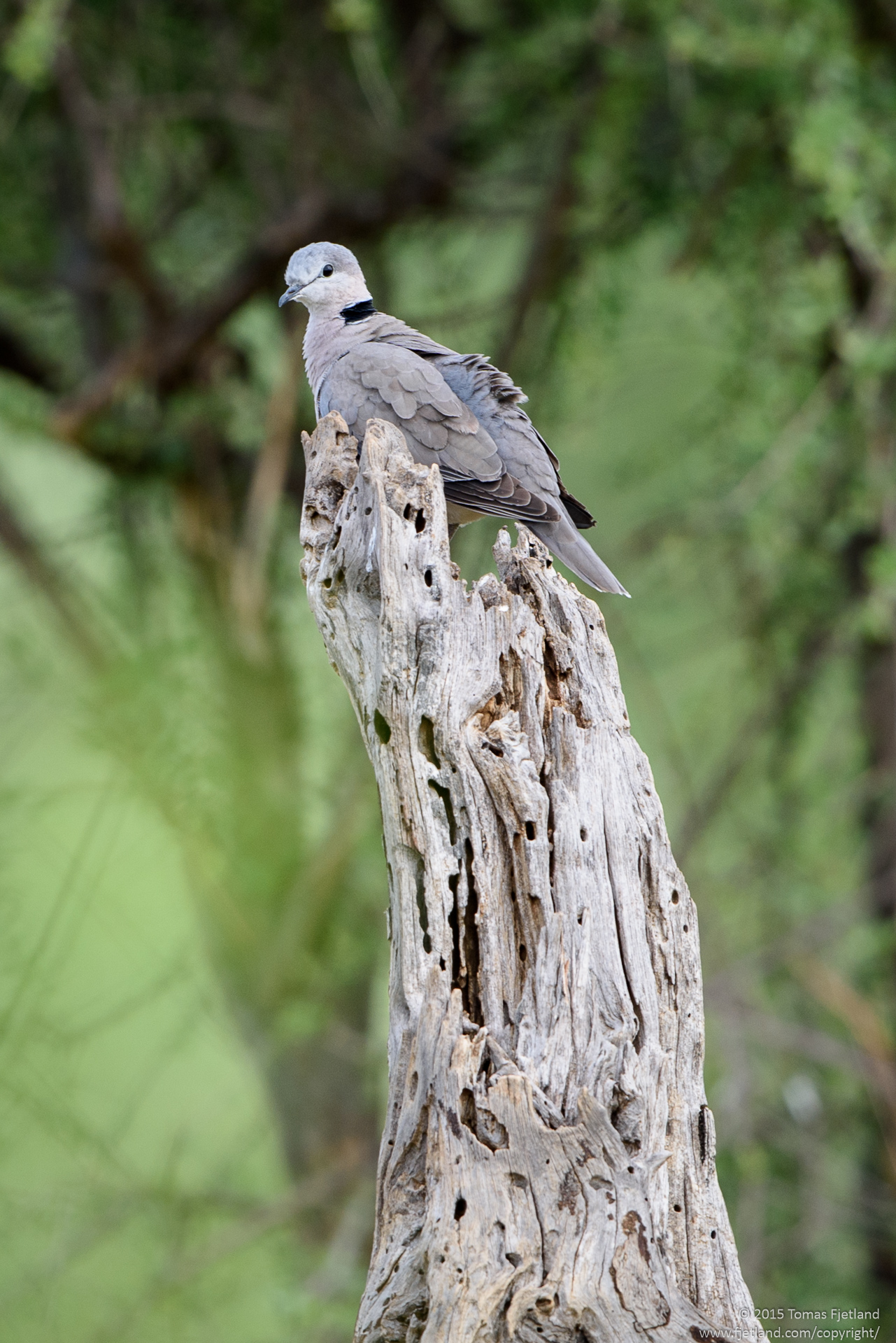
This ring-necked dove was very hard to spot on a distance, as it sat completely still as a n extension of the dead tree
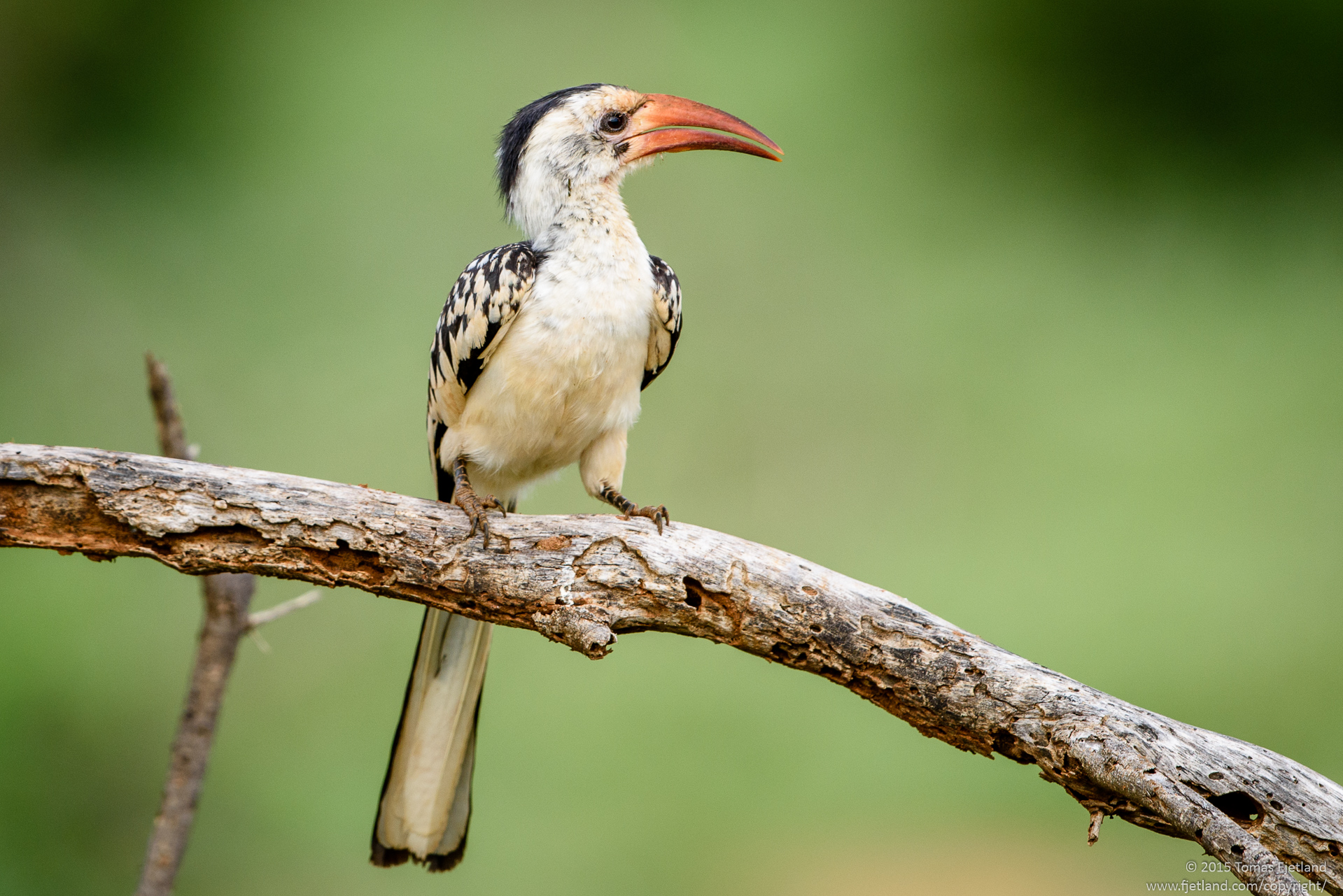
This red-billed hornbill was trying to impress a female by showing her how much mud he could fit in his beak. Males use mud to seal the female inside hollow trees where she looks after the eggs
Normally you can see animals being groomed by oxpeckers without reacting at all, or at least not displaying any signs of discomfort. I always wondered about this since I would expect the claws to hurt when the oxpeckers hang on to the skin on the sides of the animals bodies. It seems this might be a tolerance the animals develop over time, since we saw a group of impala calves that were obviously not comfortable with the oxpeckers climbing on them.
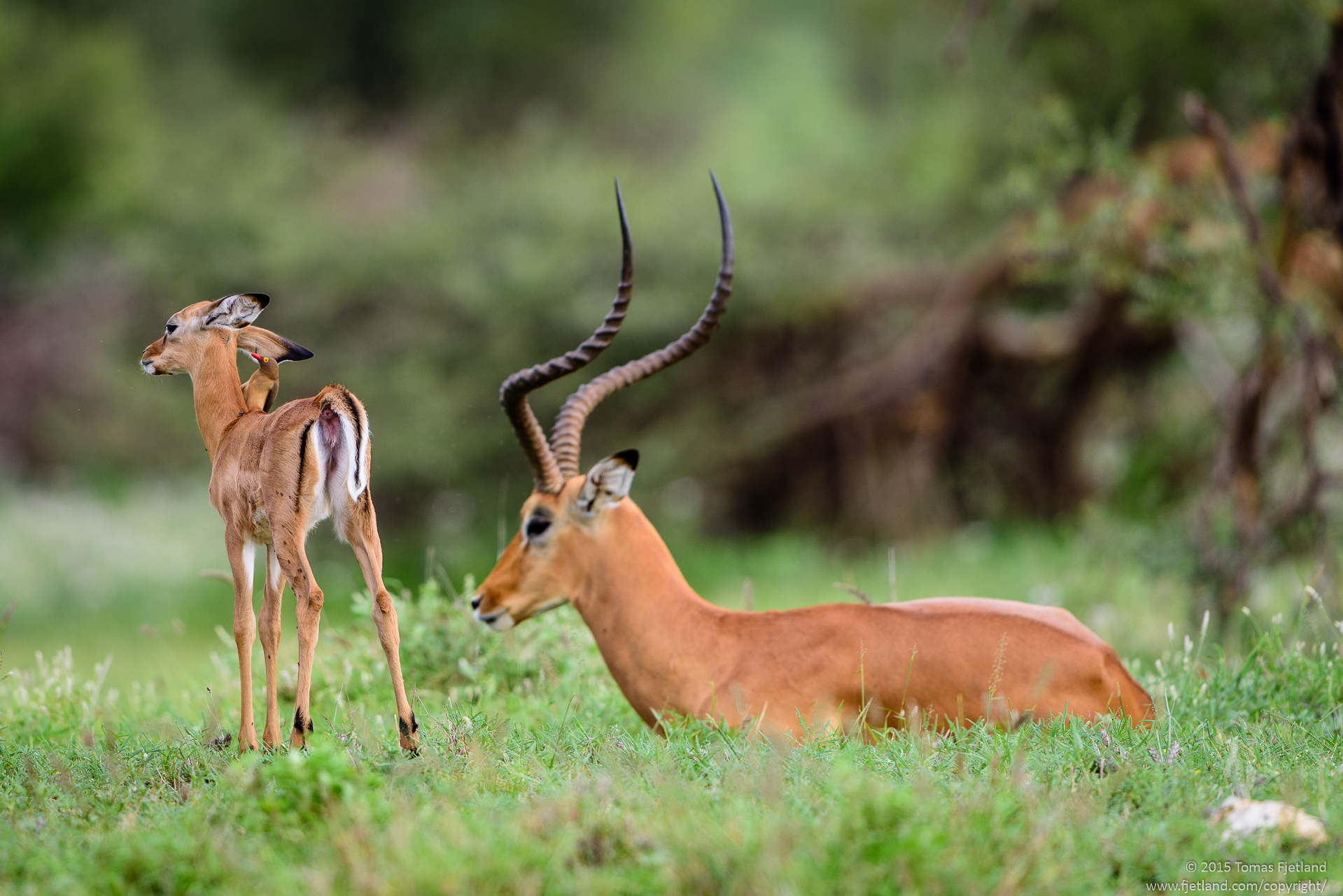
The Impala calf is obviously not used to being attended to by oxpeckers, but it seems the pests and parasites are still more uncomfortable than the cleaning bird
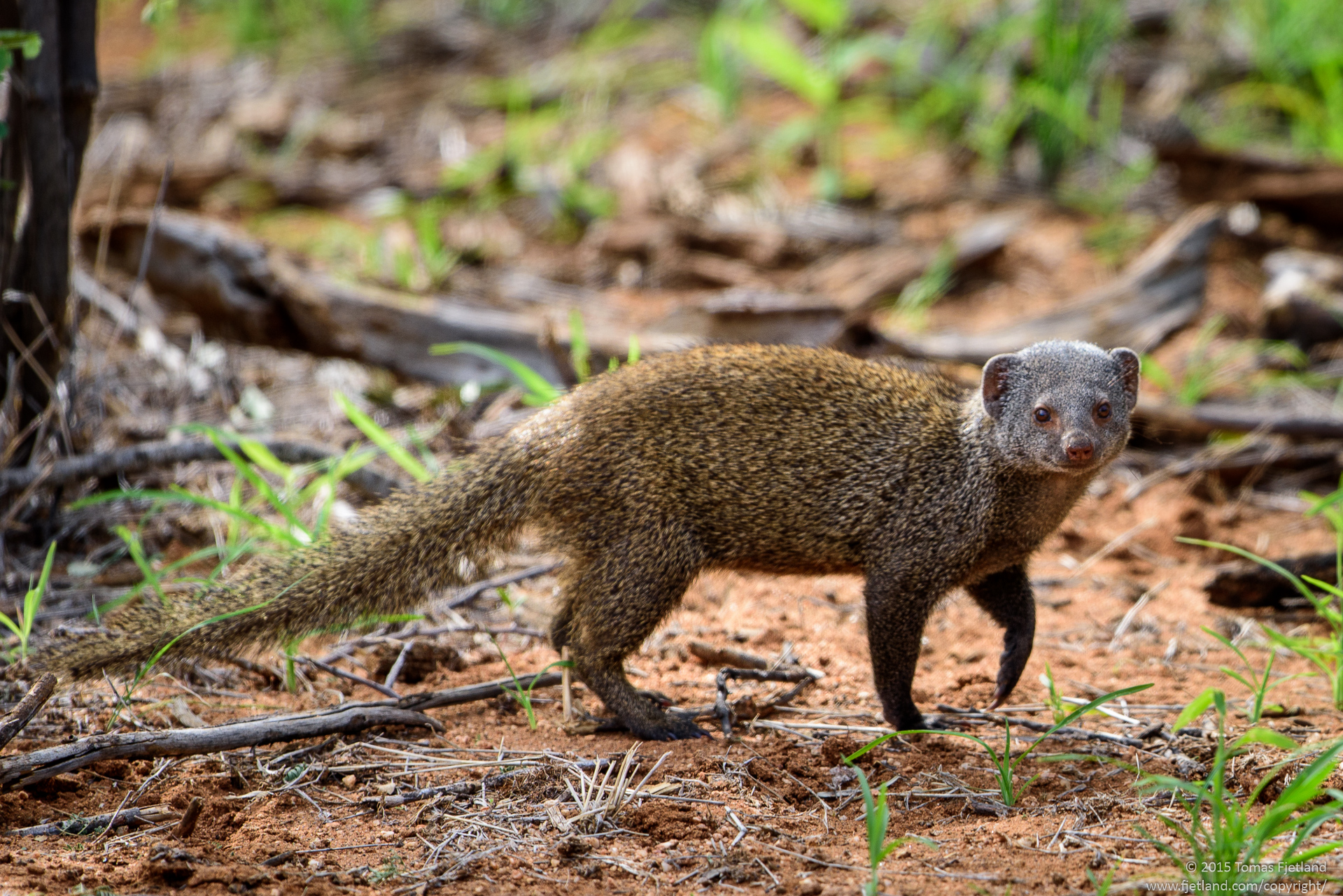
We came across a group of Dwarf mongoose among the rocks up in the hillside. Unfortunately most of them were gone before I could get any shots of the family
While some of Samburus characteristic species had evaded us, the reticulated giraffes were still around. They have a very distinctive pattern compared to the more common “mara” giraffe. While we were observing a few of them, suddenly a young elephant cub came running towards them with ears out to the sides and trunk spinning around. Most of the giraffes seemed to ignore it, but one reluctantly trotted away from it. It really seemed more like it was playing along rather than being scared away. I suppose if this was a common way for the cubs to interact with the other species, this could explain why some of the smaller animals avoided the areas with a lot of elephants.
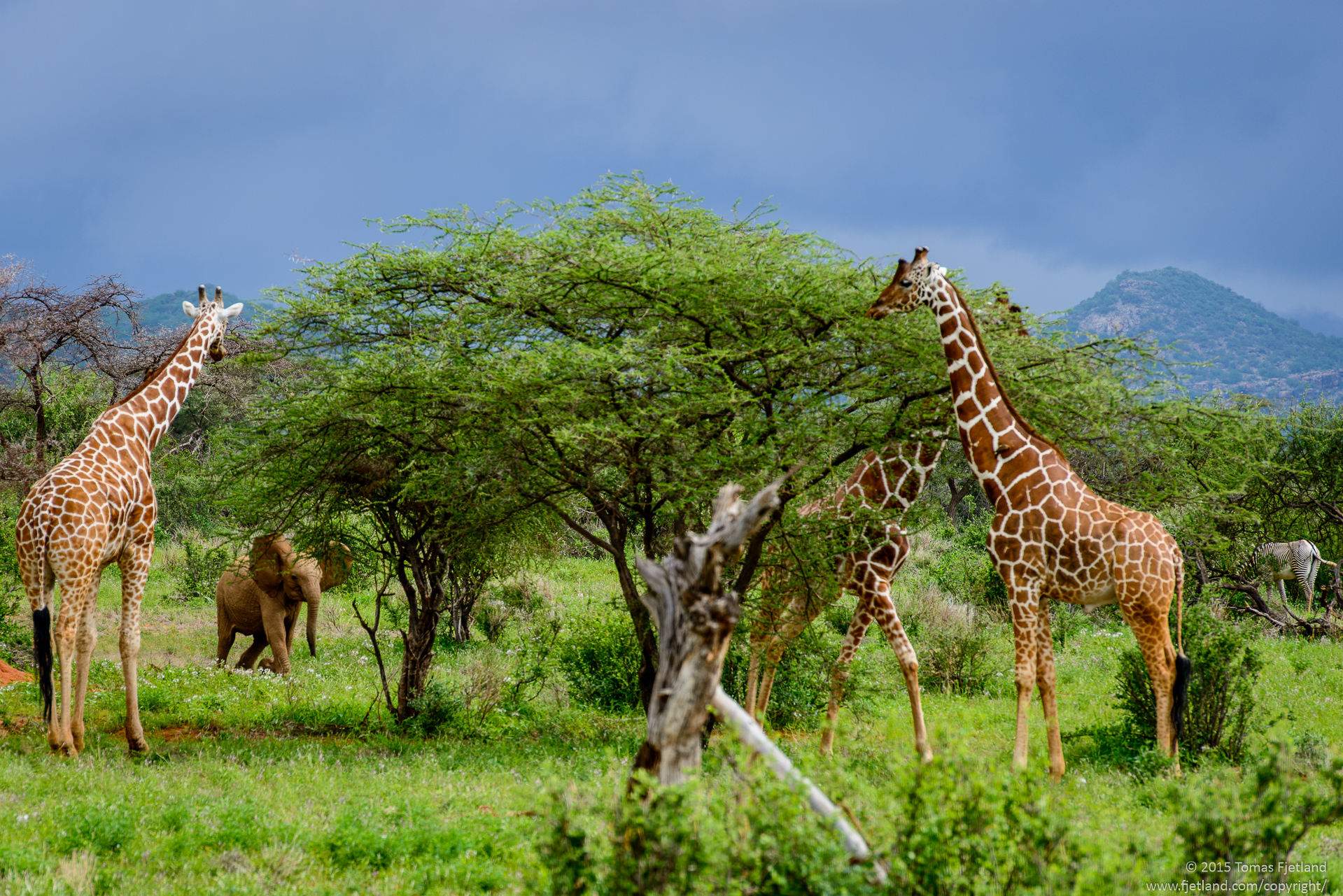
As we were photographing these giraffes, suddenly an elephant cub came running in trying to see how tall animals he could scare. Only one of the three trotted away, which seemed more like playing along than anything else
As the morning progressed the clouds grew bigger and darker, so we decided to head back to the camp for breakfast. We just made it back before intense showers started.
Thankfully rains in Africa pass as suddenly as they arrive, so shortly after breakfast we could walk around the camp and get to know the grounds before the afternoon drive.
By the pool area there’s a basic fence separating the wilderness from the sunbeds (Larsens camp is a fenced camp). The resident vervet monkeys always had a patrol watching us to see if an opportunity to steal something arose, no doubt while another group were checking if we had forgotten to zip up our tents 🙂
You can never have too many baby monkey shots 🙂
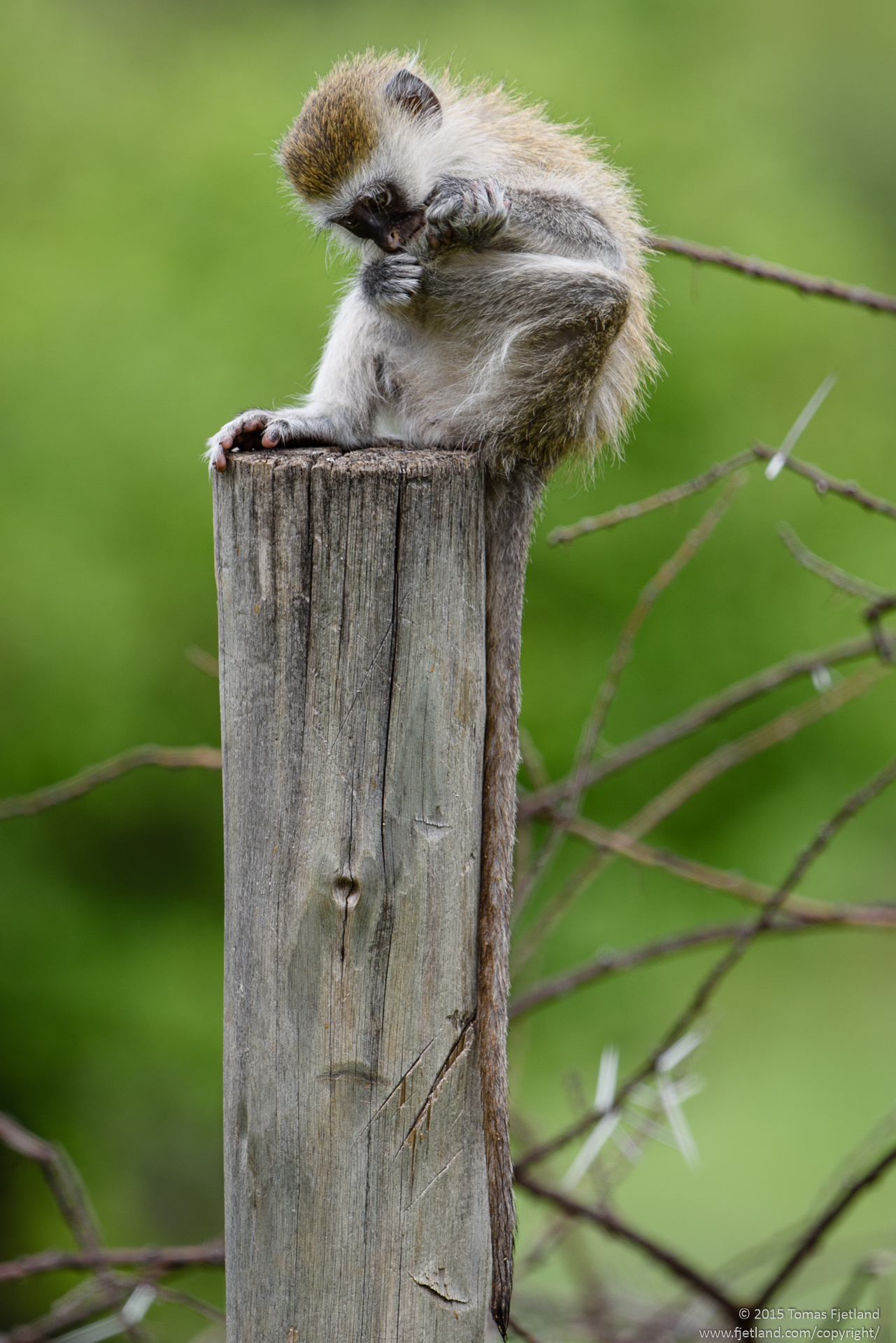
This young Vervet monkey decided to take a break from watching us for anything to steal so he could do some pedicure
While Larsens camp is a fenced camp, the tents are all along the river, a few meters from the riverbank. You can fence out the hyenas, but you can’t fence out the river animals.
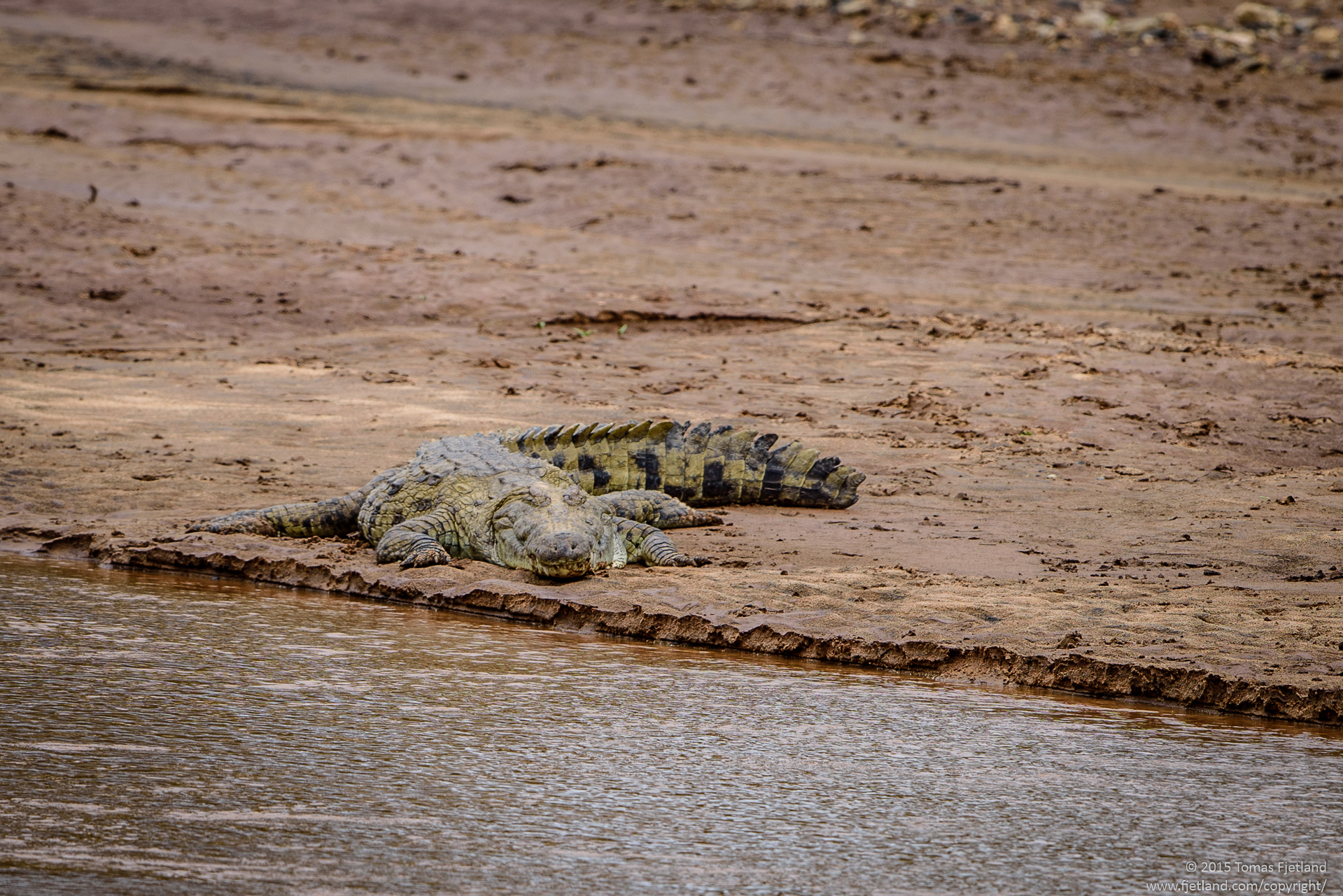
A fairly large Nile crocodile on the opposite bank from the camp. You could see them on the opposite side now and then, but they seem to rarely come out of the water on the camp side
The grounds of the camp are great. Not only does the canopy of trees create a very pleasant temperature and light, but there’s lots of interesting birds and small animals within the camps. On a previous visit a magnificent Verreaux’s Eagle-Owl was spotted on a drive and caused quite a lot of excitement. This time we had a pair in the tree above my tent 🙂
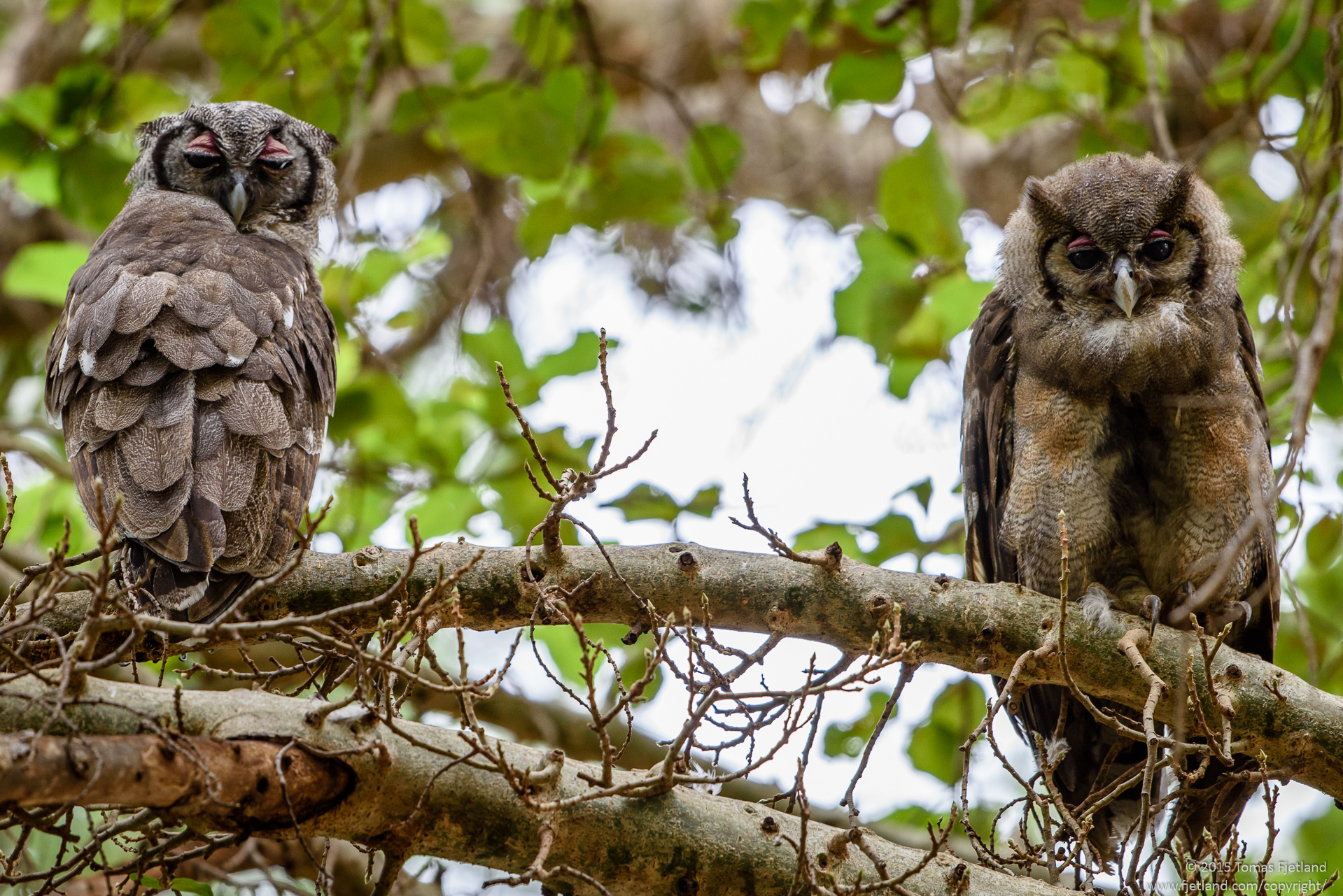
This pair of Verreaux’s Eagle-Owls were sitting in a tree right above my tent inside Larsens camp. You could easily spend a whole day shooting birds just inside of Larsens camp, it’s so full of beautiful species
After lunch and a nap I sat outside my tent and watched elephants walk by or stop to have a bite to eat right across the river.
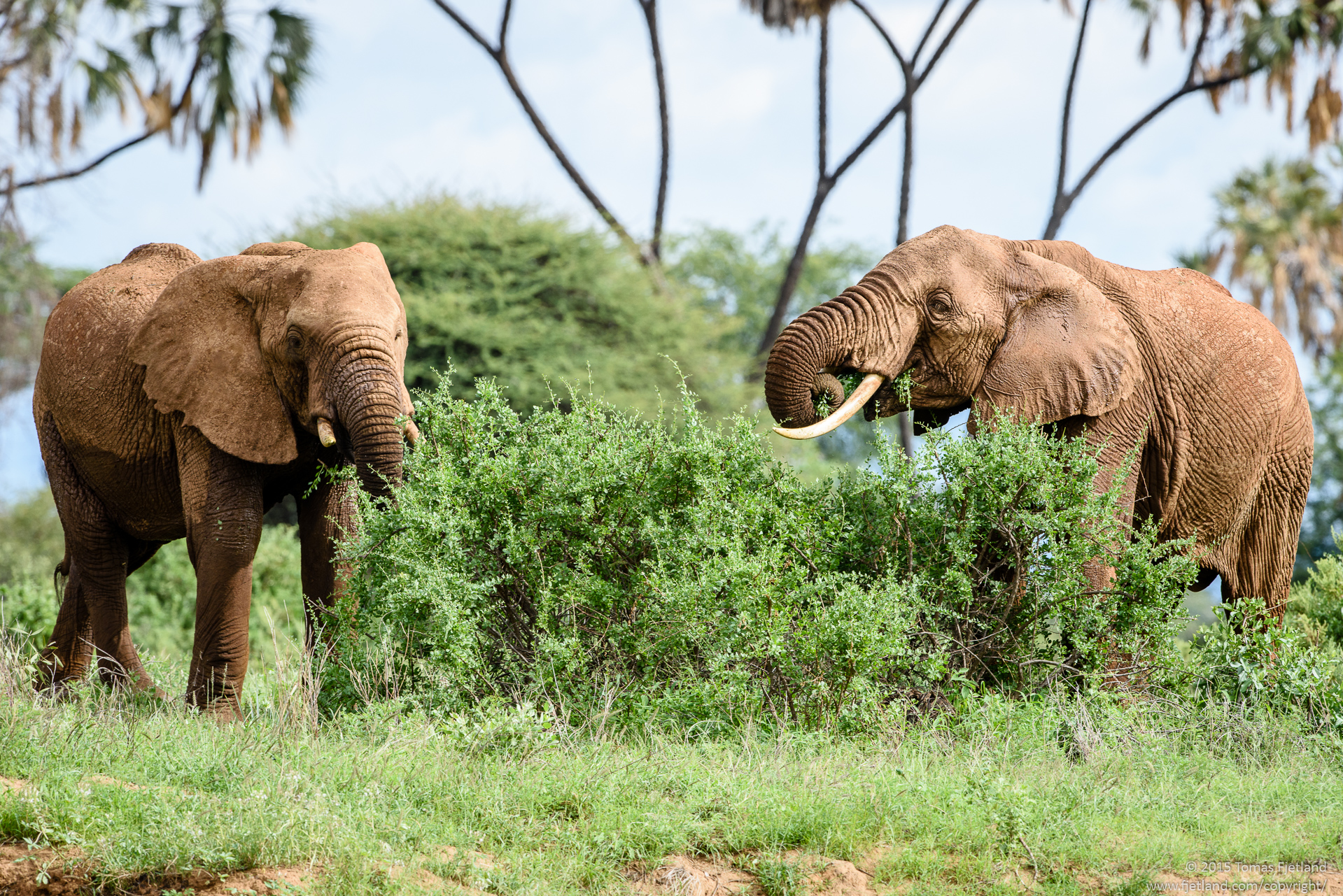
Two large elephants grazing on a bush just opposite the river from my tent. I think I took this sitting on the porch outside my tent
In the afternoon we headed out for another drive. The skies were still somewhat cloudy but at least it wasn’t raining.
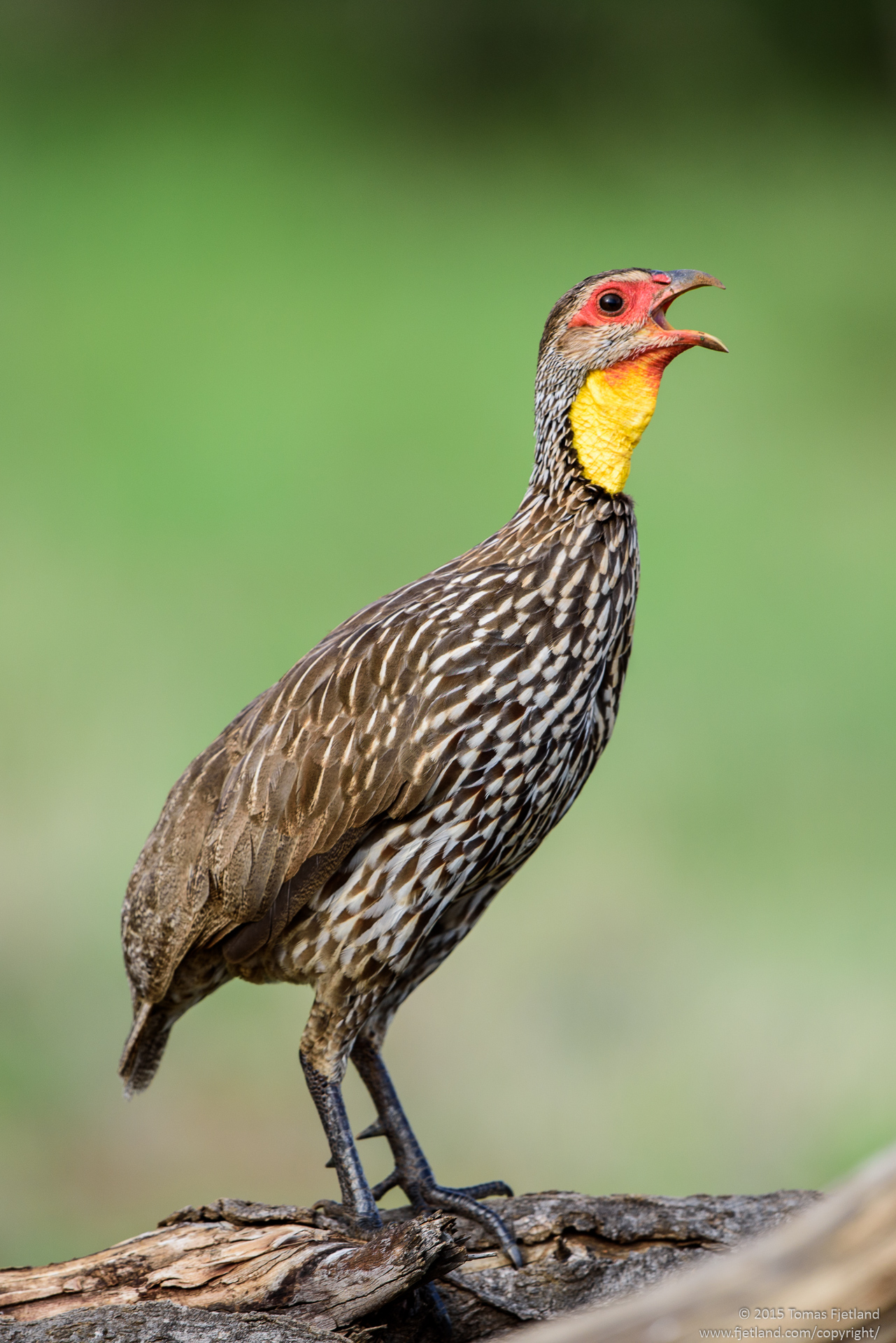
Another Yellow-Necked Spurfowl, this time on a dead tree calling for a mate or to scare off competitors
One of my favorite things about Samburu was always the variety and number of raptors. This time there was less, but one of my absolute favorites was still a regular sight. The Secretary bird is such a graceful and beautiful bird, despite its size.
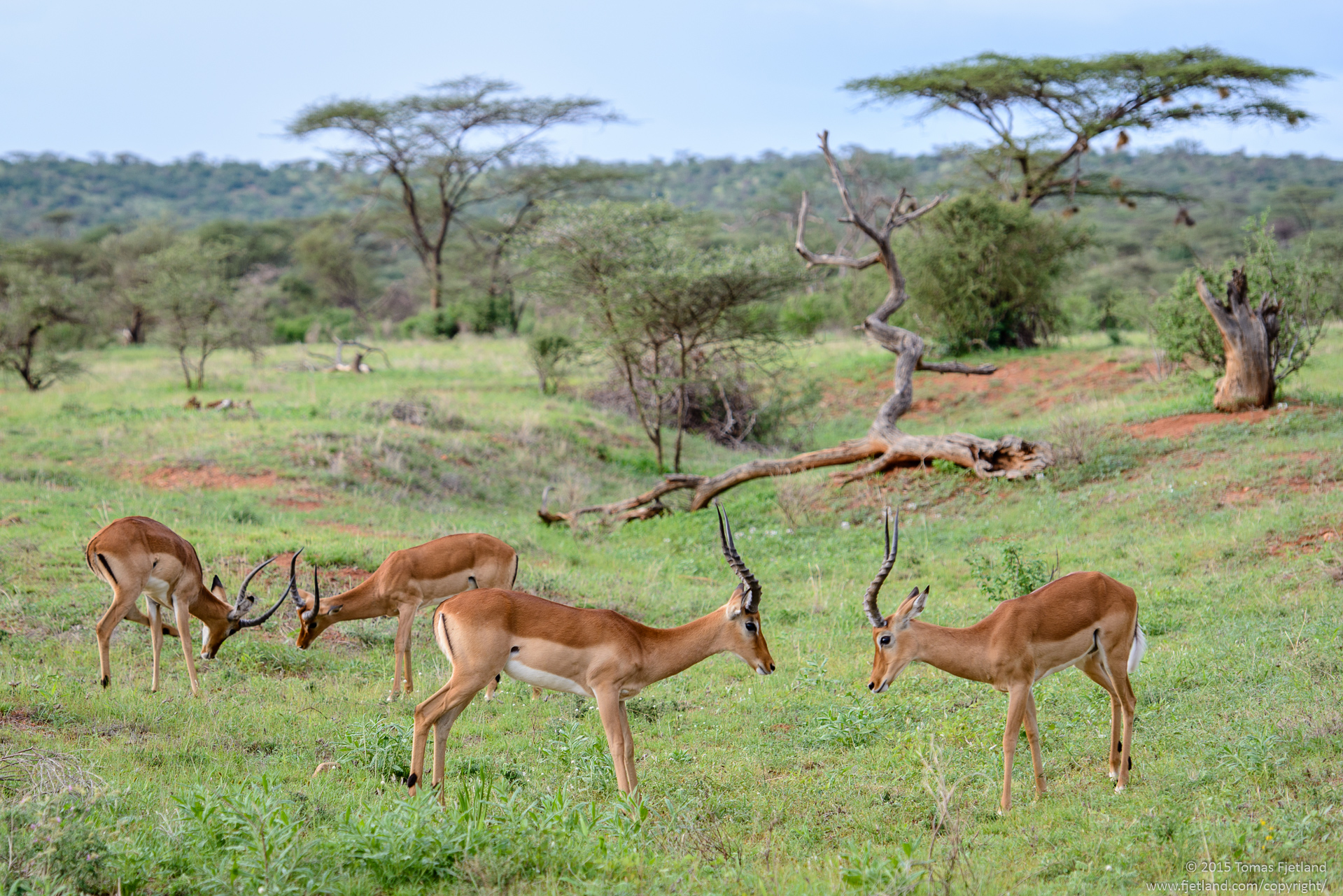
Young male Impalas that don’t have their own hareem often form bachelor groups where they spend the days practicing their fighting skills so they’re ready for the day they get a chance to challenge a buck with his own hareem
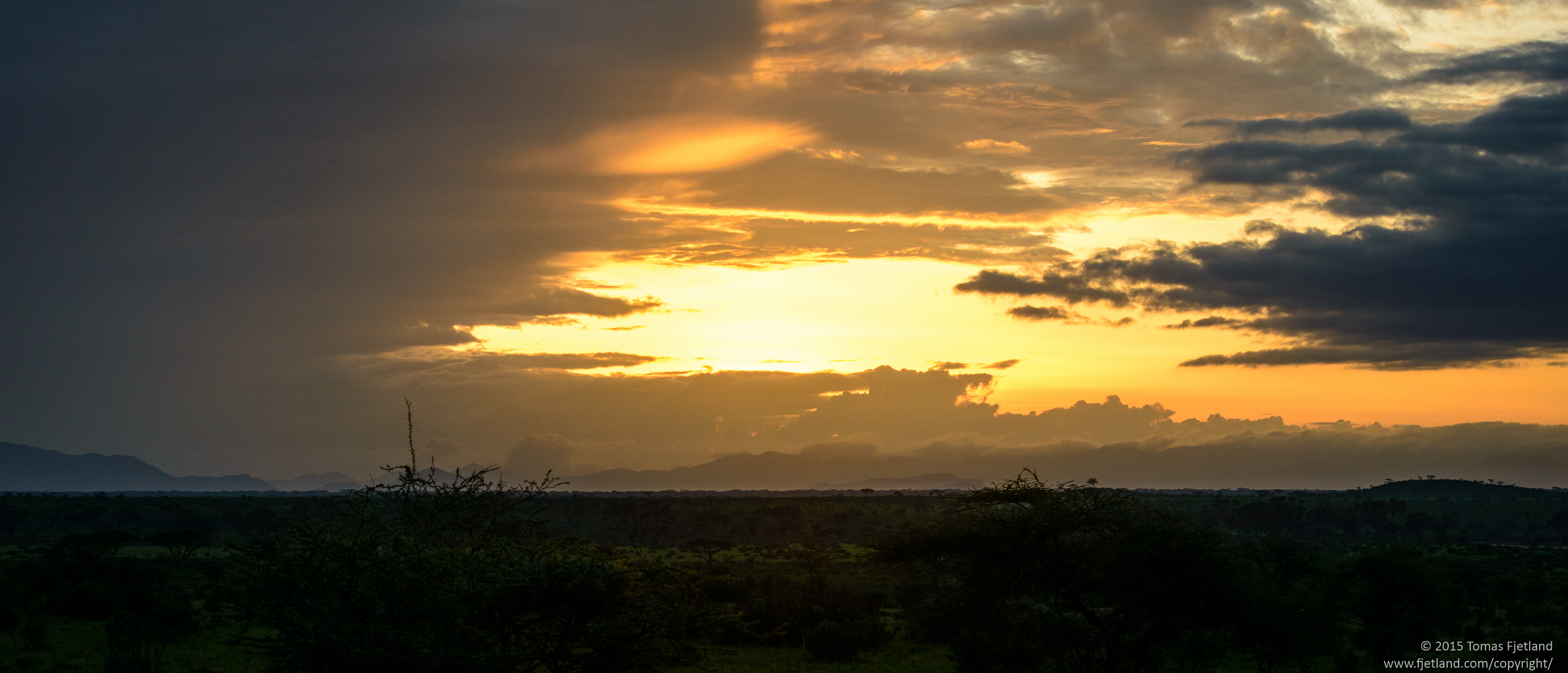
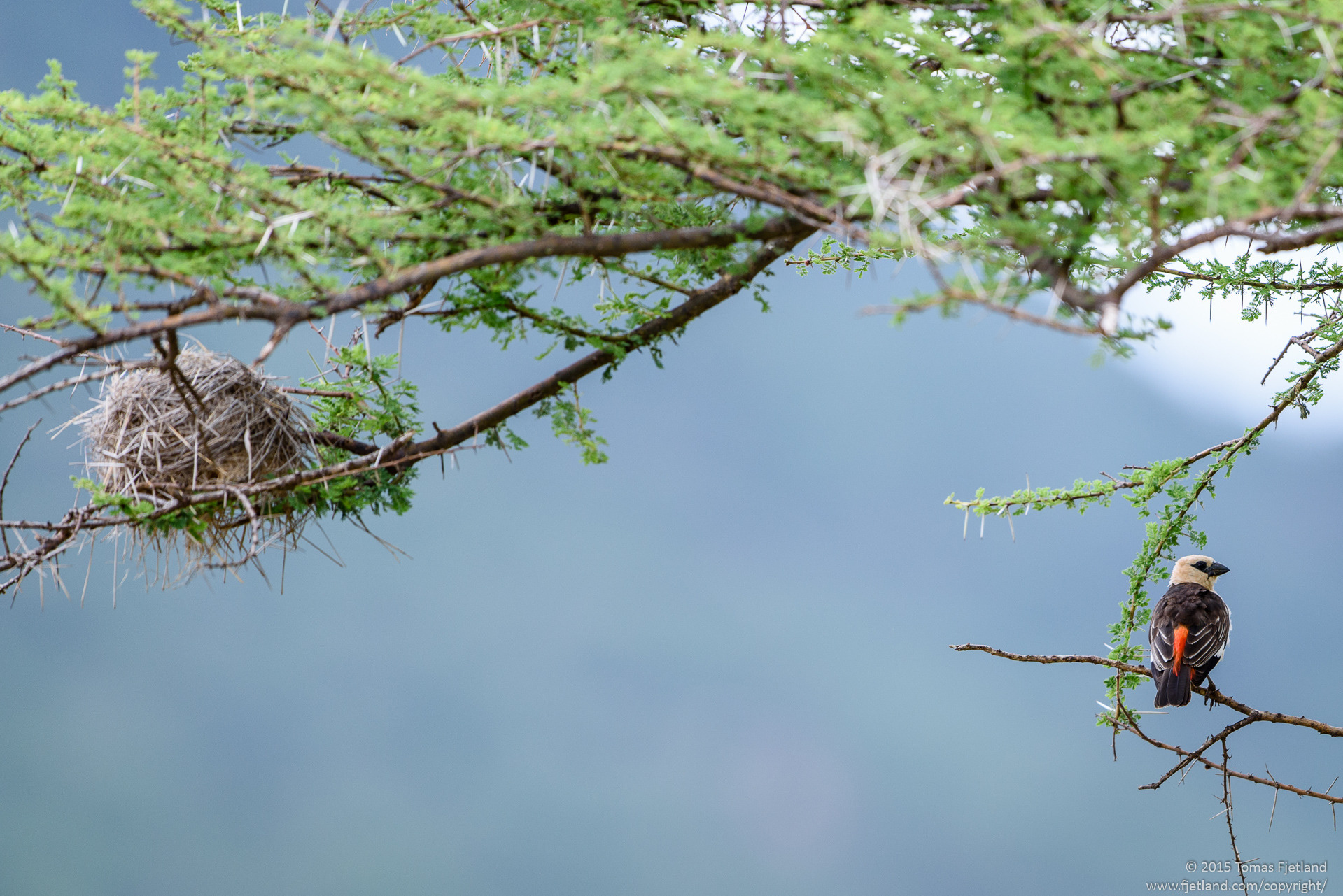
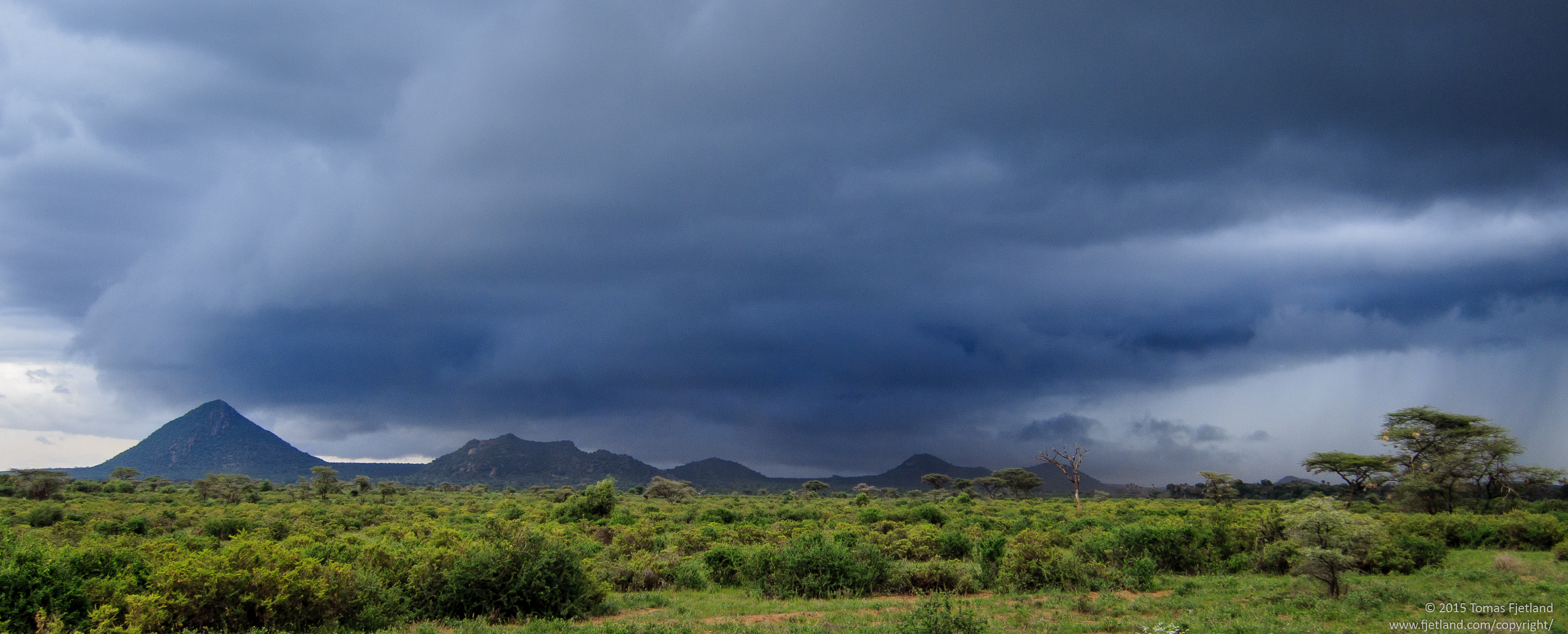
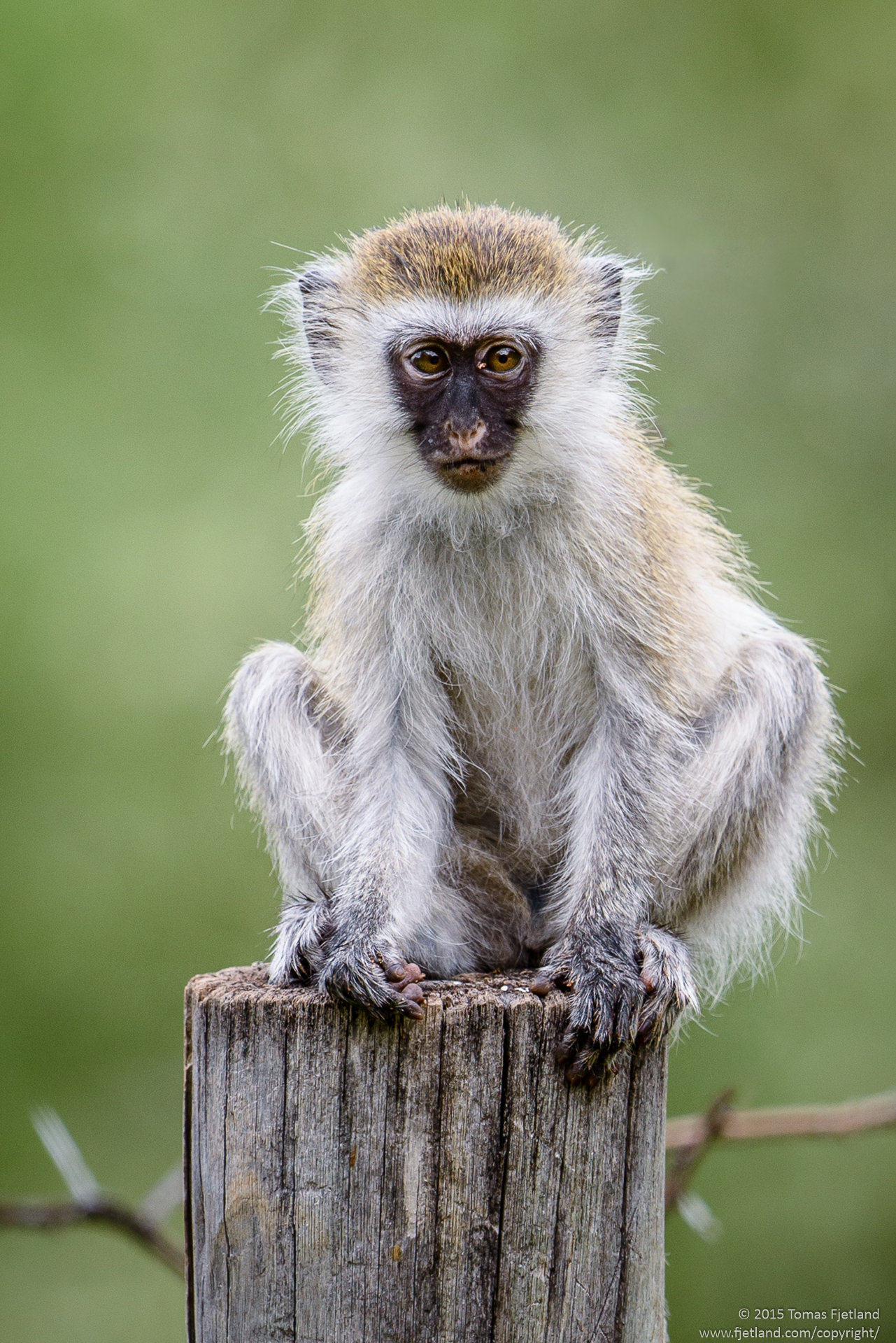
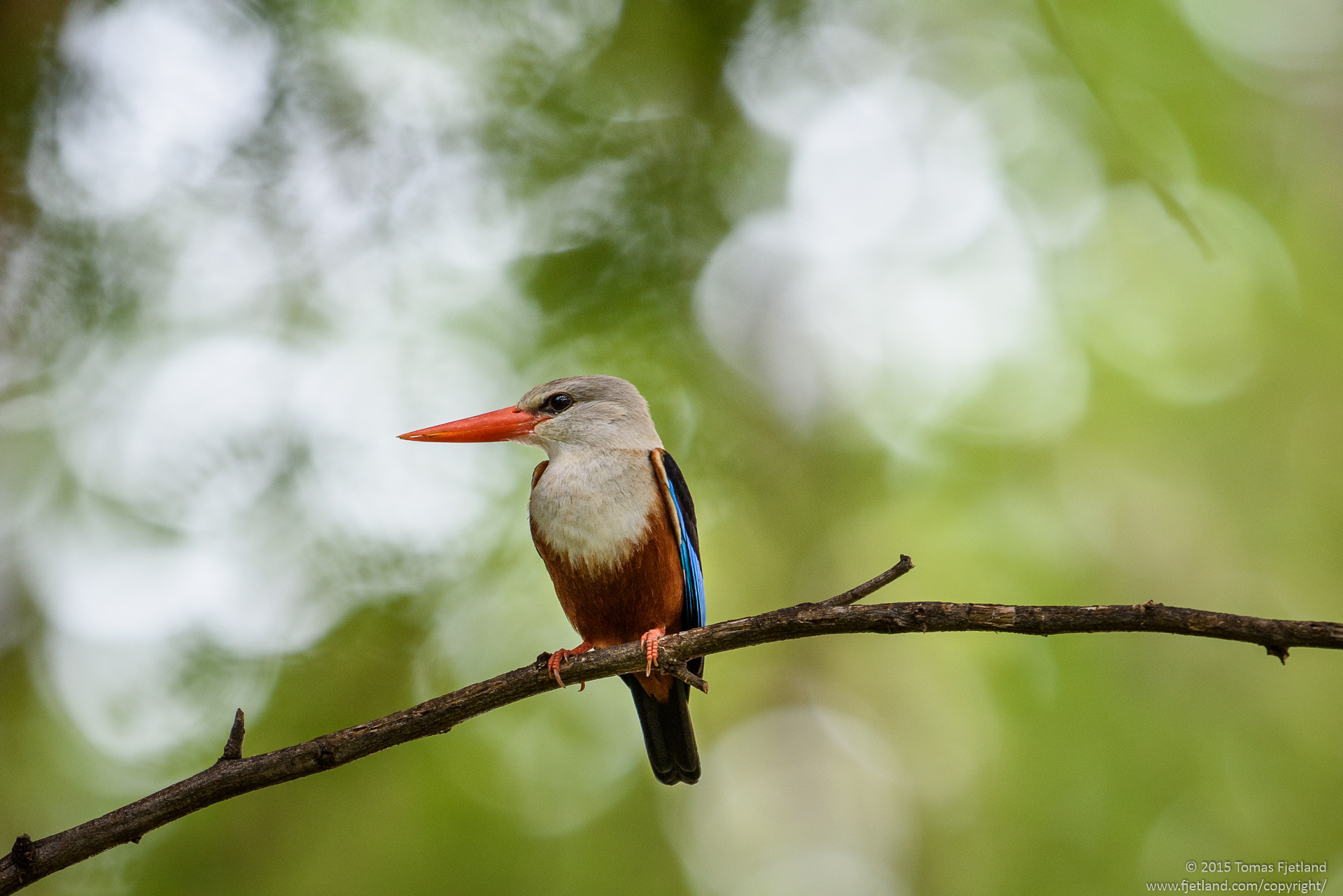
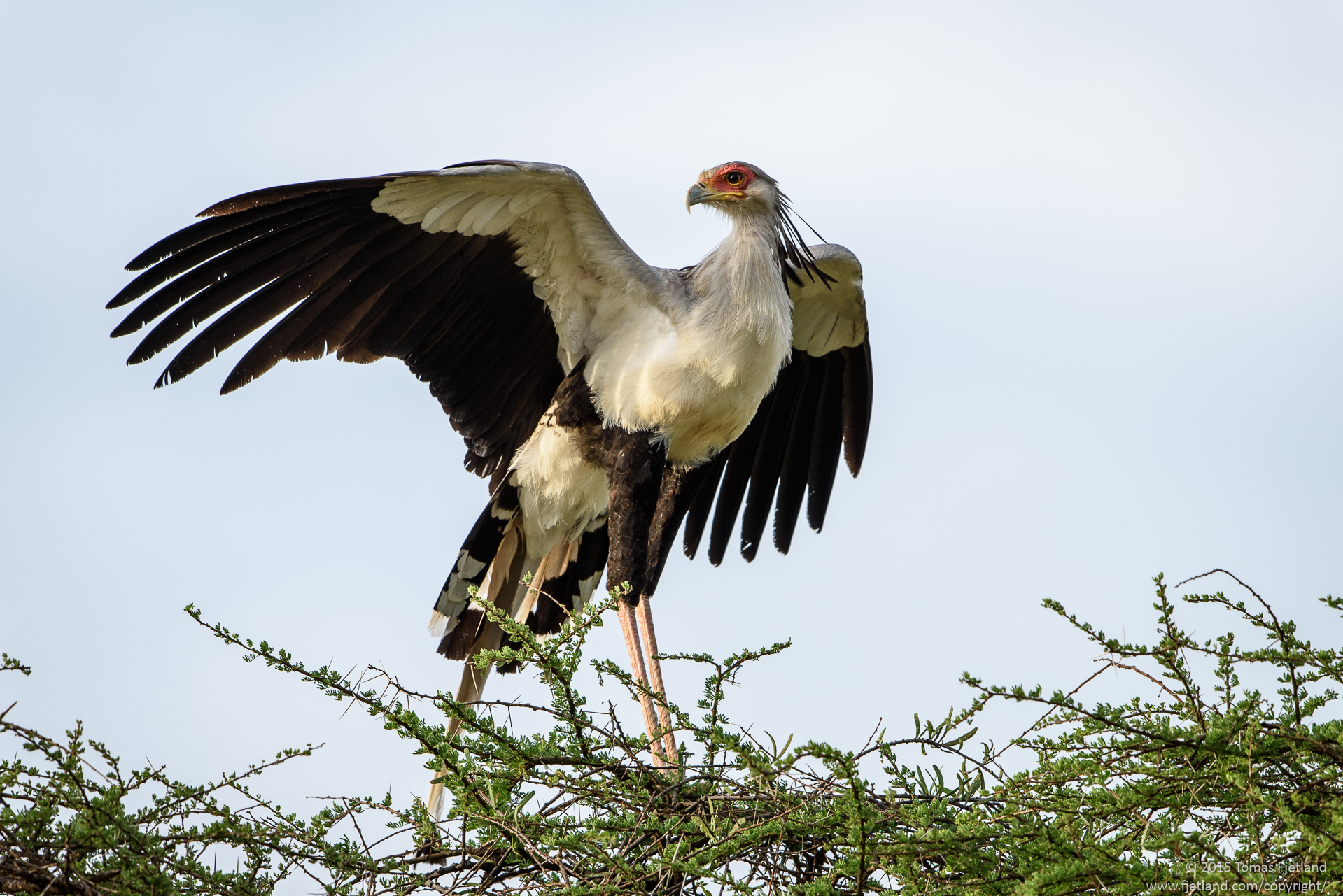
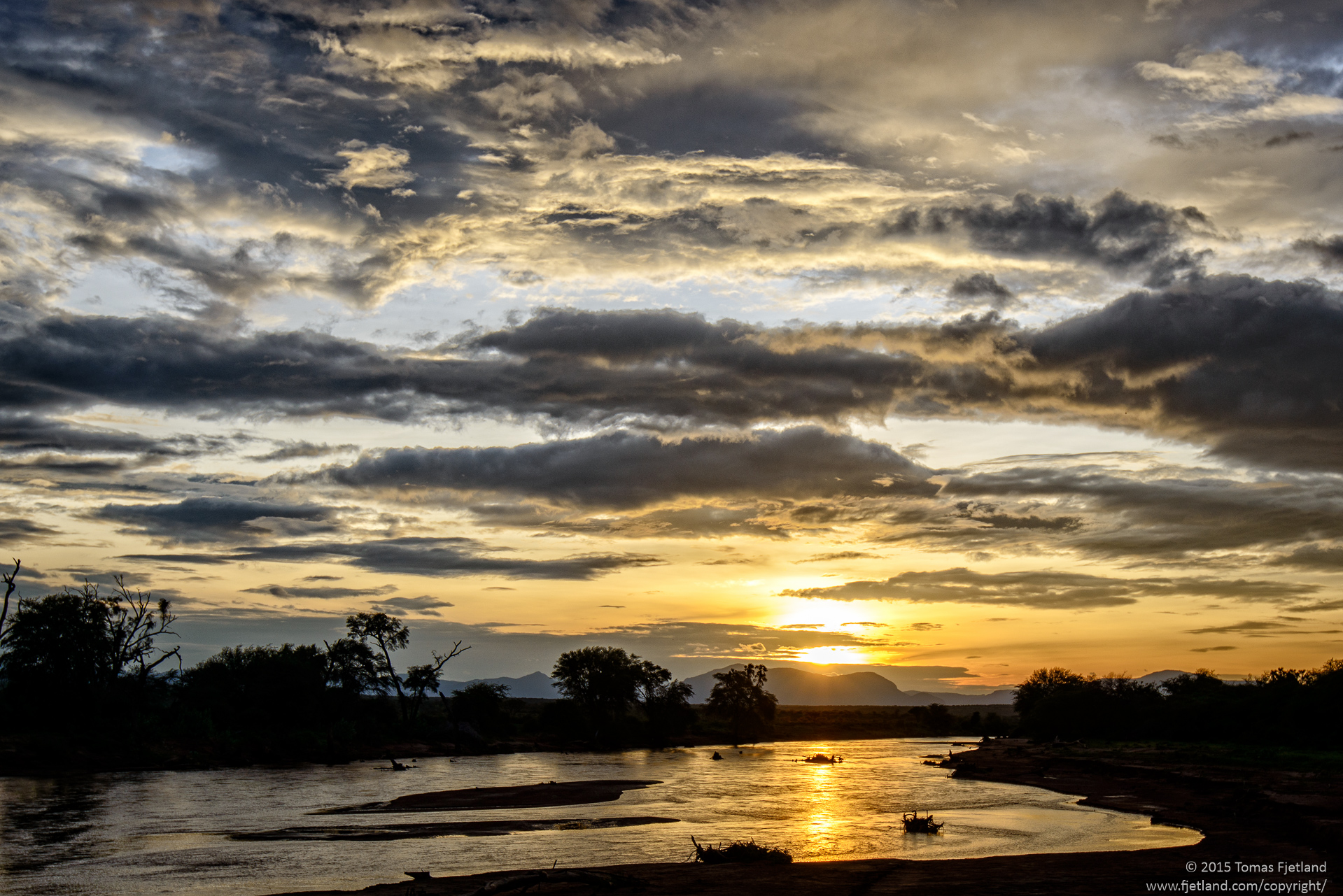
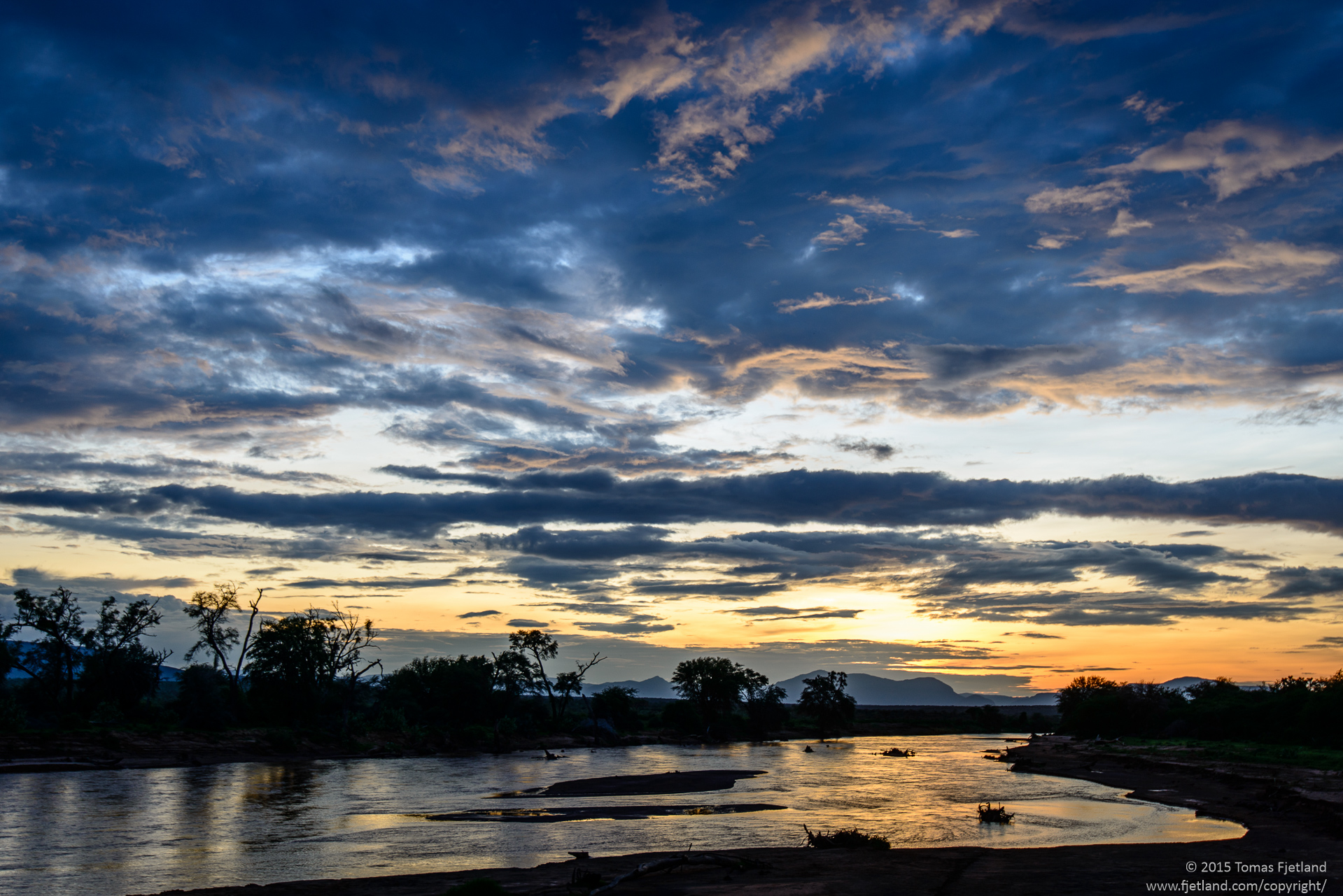
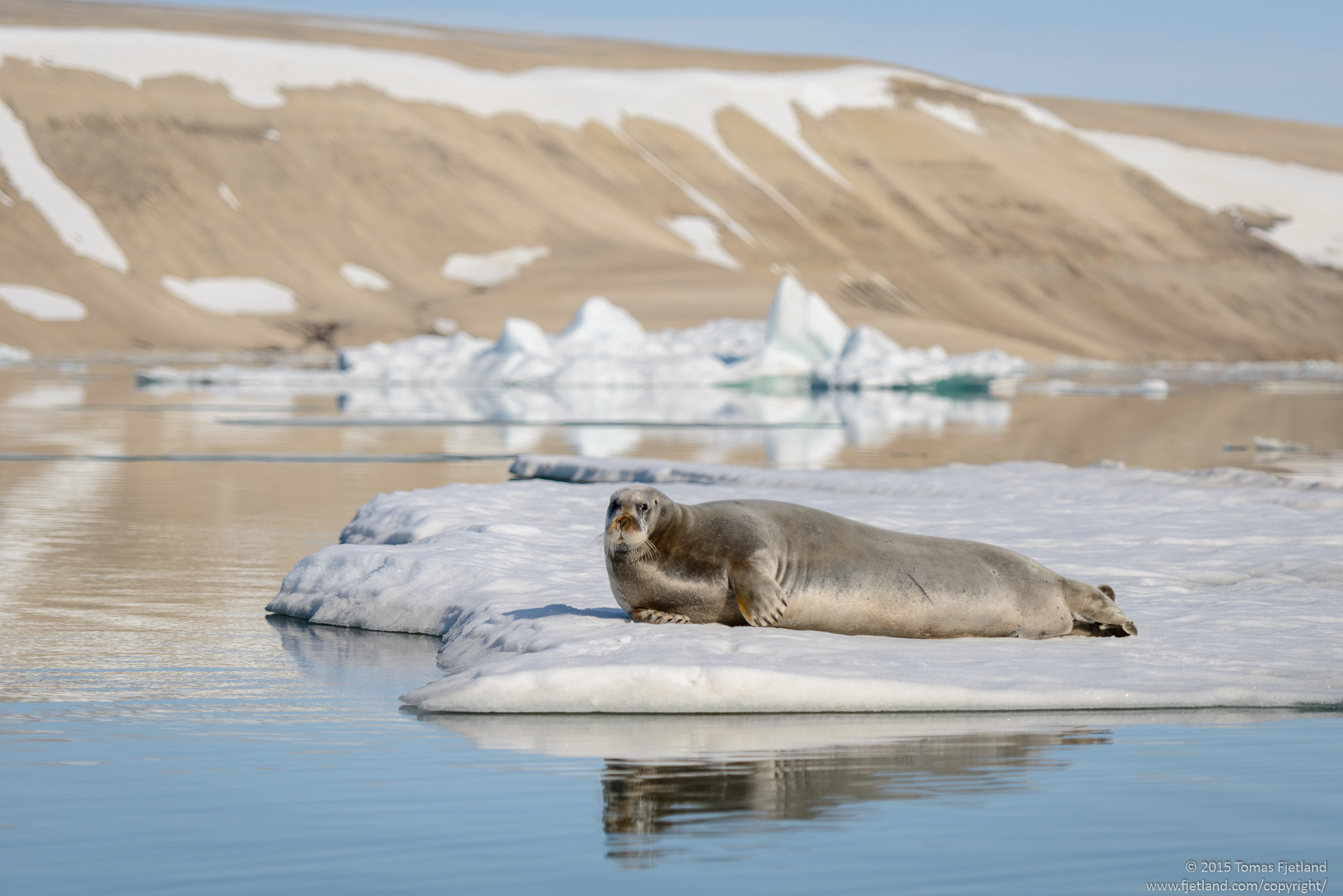
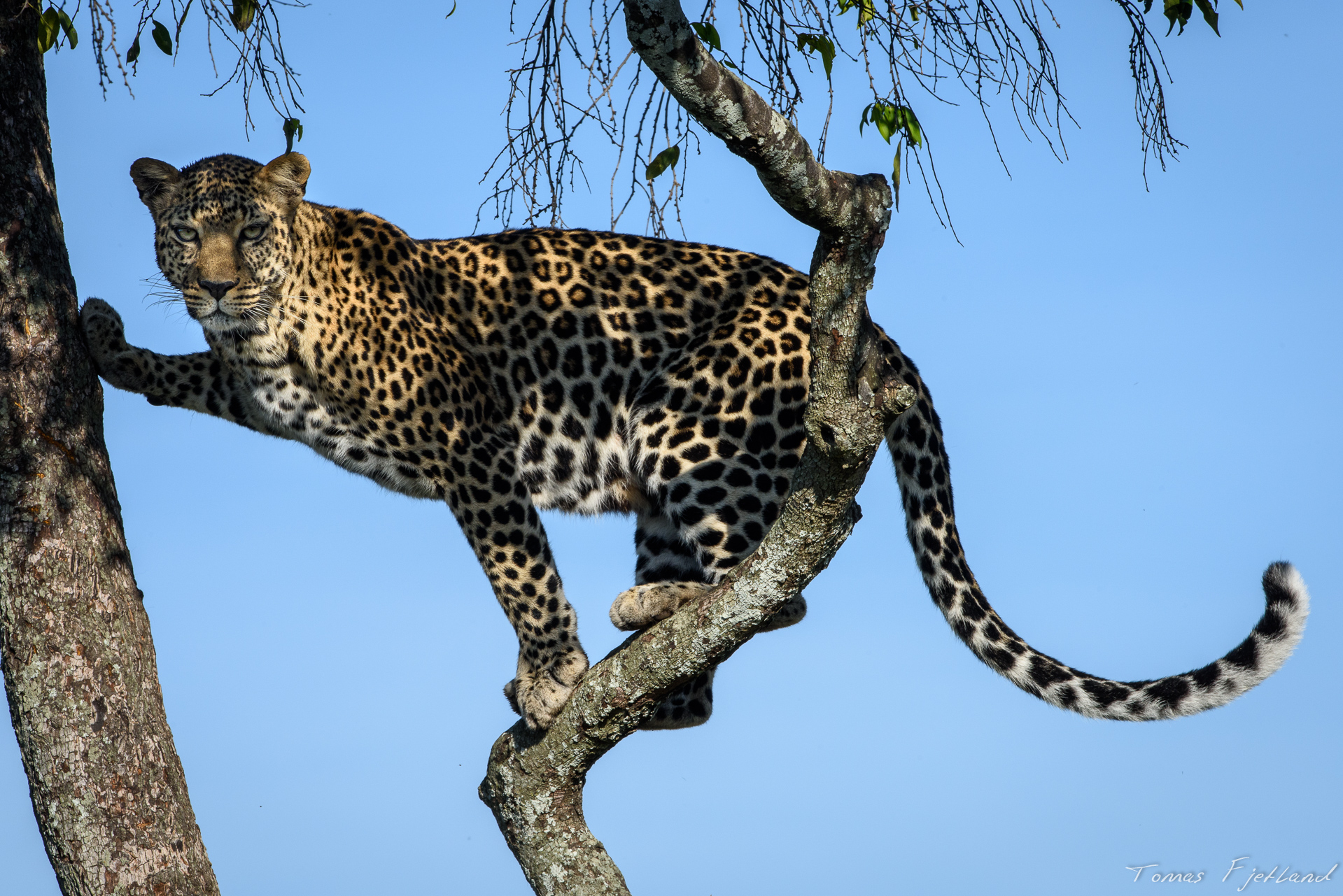
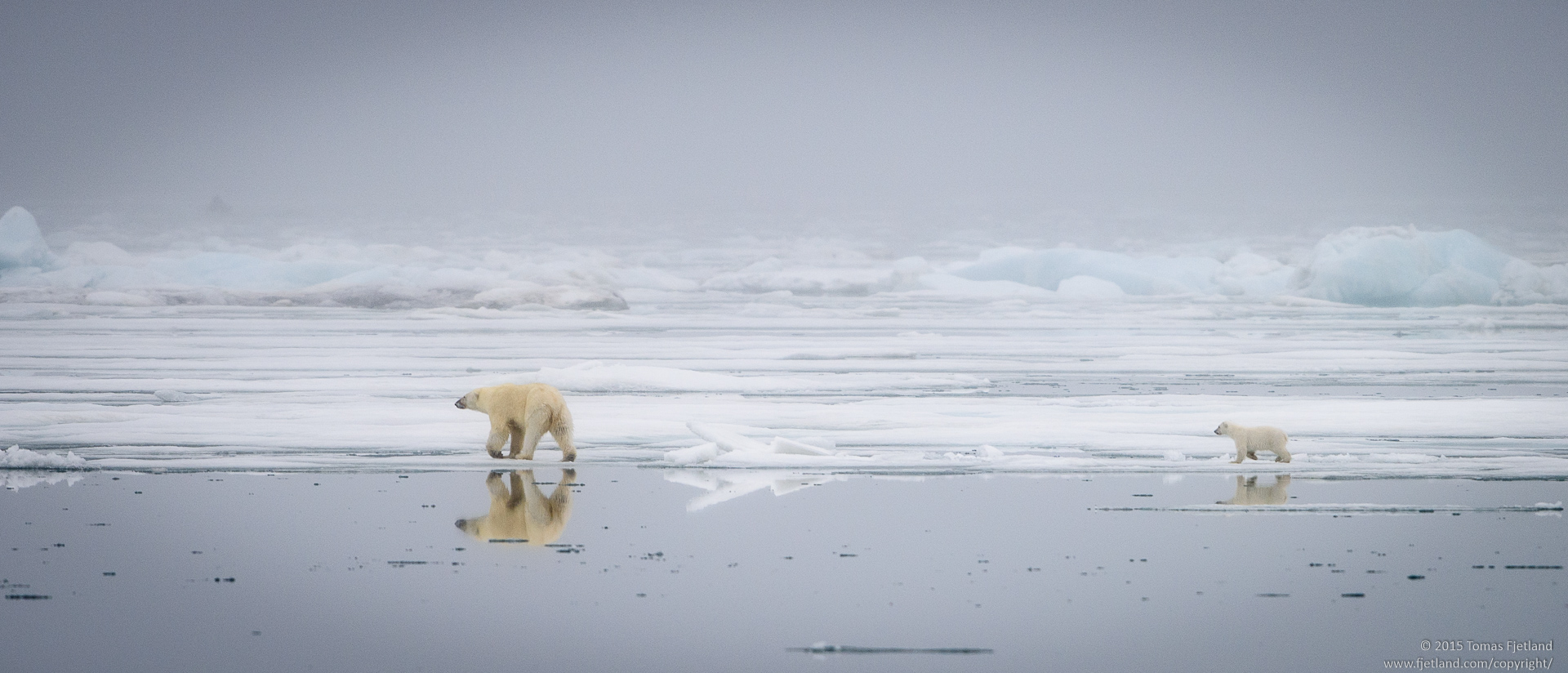
1 Response
[…] November 20, 2014. (Previous day) […]